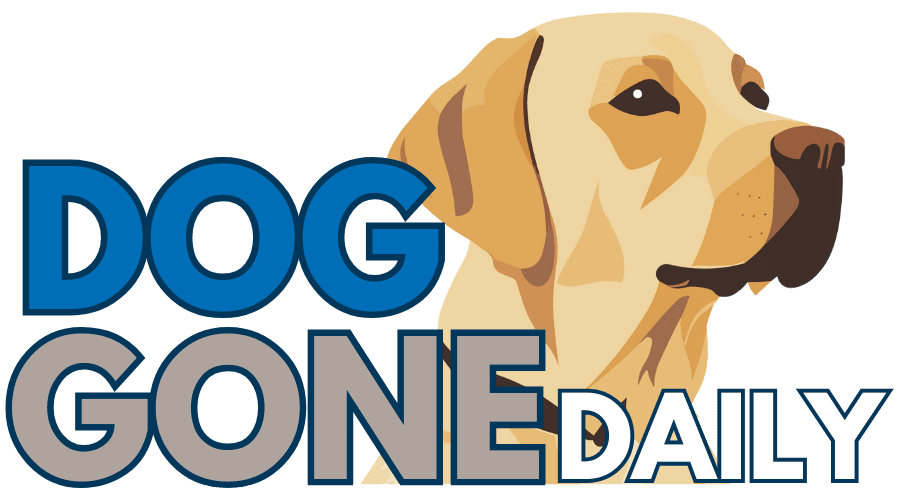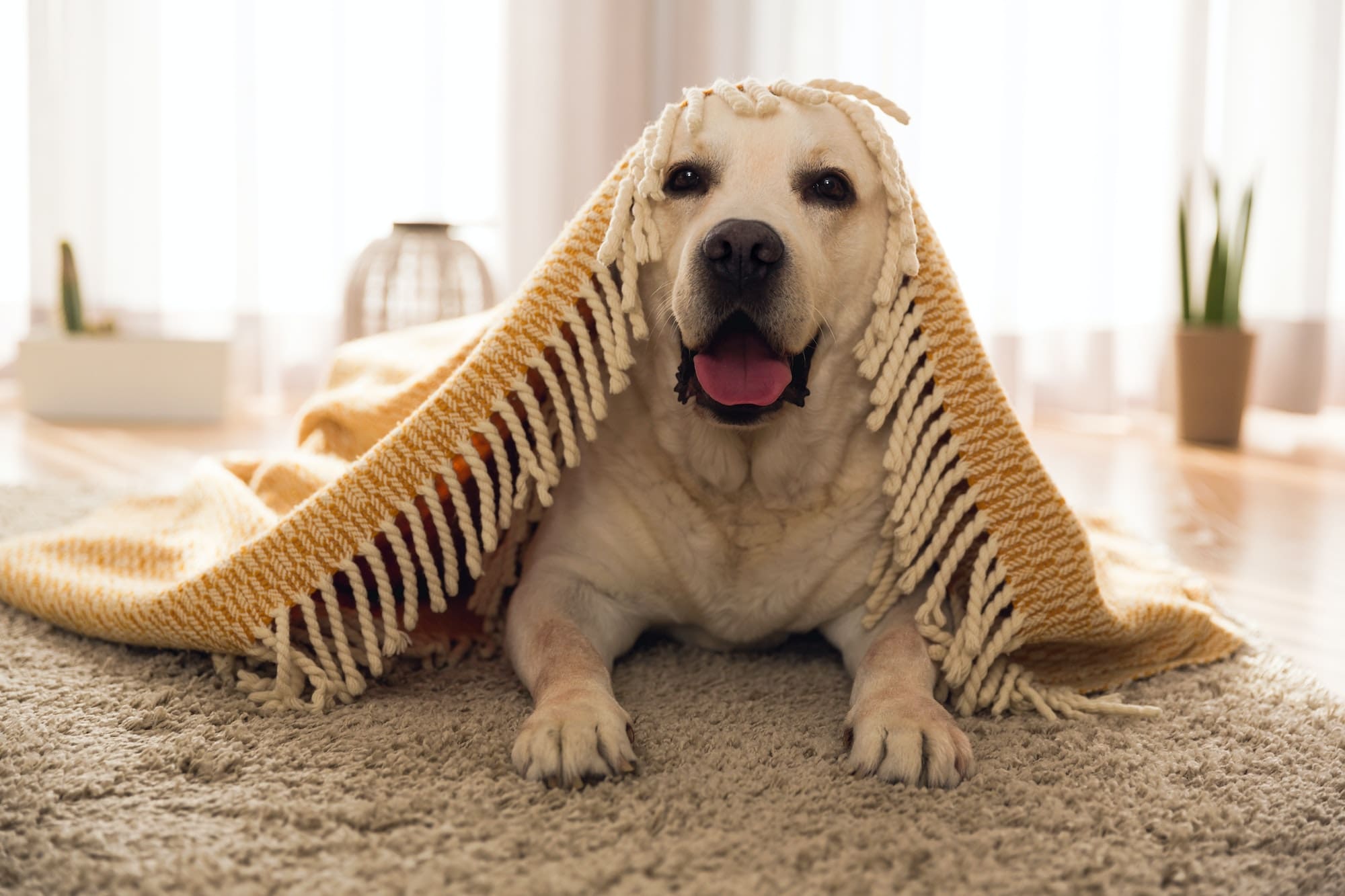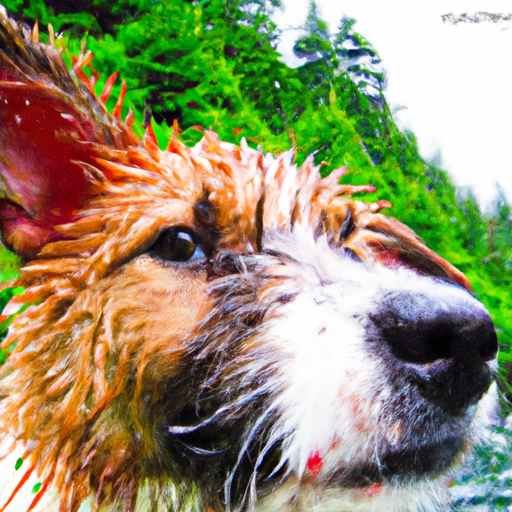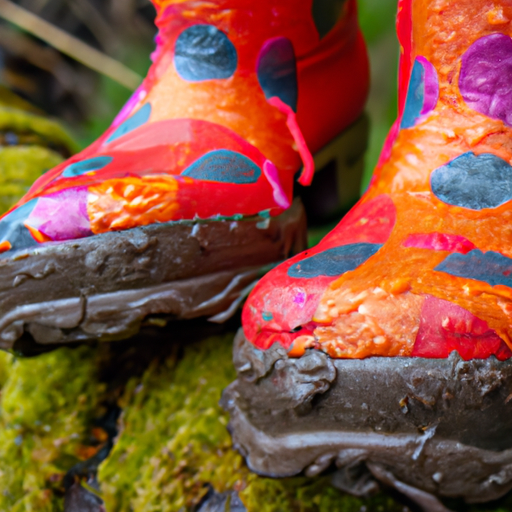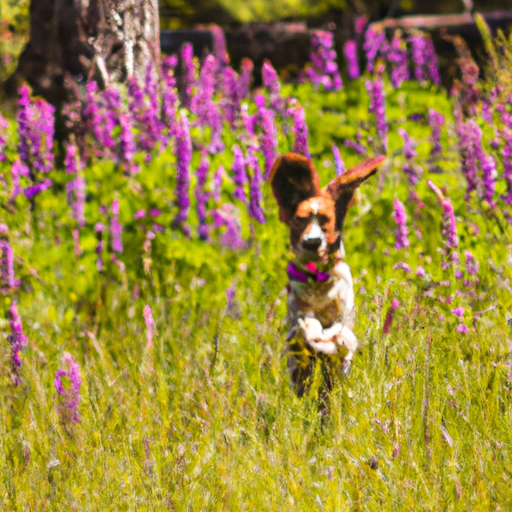Have you ever wondered how to ensure your adult dog feels comfortable and secure when left alone at home? In our article “Home Alone: Managing Your Adult Dog's Independence,” we explore practical tips and strategies to help you create a safe and relaxing environment for your furry friend while you're away. From establishing a routine to providing engaging activities, we'll guide you through the steps towards fostering your dog's independence and ensuring their well-being even when you're not by their side.
Setting up a safe environment
Creating a designated space for your dog
When it comes to managing your dog's independence, creating a designated space for them is essential. This can be a specific room or an area in your home that is safe and comfortable for your furry friend. Make sure the space has adequate lighting and ventilation, and is free from any potential hazards such as toxic plants, electrical cords, or small objects that your dog can chew on. Provide a cozy bed and some toys to keep them entertained and comfortable.
Securing potential hazards
Before leaving your dog alone, it's important to secure any potential hazards in your home. This includes ensuring that cabinets containing cleaning products or medications are locked, removing any sharp objects or breakable items from their reach, and covering electrical outlets. Additionally, consider installing baby gates or using childproof locks on doors to restrict your dog's access to certain areas of your home, especially if they have a tendency to get into trouble.
Providing interactive toys and puzzles
To keep your dog mentally stimulated and entertained while you're away, provide them with interactive toys and puzzles. These toys are designed to challenge your dog's problem-solving skills and keep them engaged for longer periods of time. Look for toys that dispense treats or have hidden compartments for your dog to discover. This not only provides entertainment, but also helps to prevent boredom and destructive behavior that may result from separation anxiety.
Establishing a routine
Creating a consistent schedule
Dogs thrive on routine, and establishing a consistent schedule can help them feel more secure and independent. Set specific times for feeding, exercise, and playtime, and stick to them as closely as possible. This consistency will not only help your dog know what to expect, but it will also make it easier for them to adjust to your absence. Dogs are creatures of habit, so having a structured routine in place can greatly contribute to their overall well-being.
Feeding and exercise times
When planning your dog's schedule, be sure to include dedicated times for feeding and exercise. Regular meal times help your dog establish a routine and can also prevent them from getting anxious or hungry throughout the day. Similarly, providing exercise before leaving them alone can help tire them out and reduce any excess energy that may contribute to separation anxiety. Aim for a balance of mental and physical stimulation to keep your dog happy and content.
Designated potty areas
Another important aspect of establishing a routine is designating specific potty areas for your dog. This is especially crucial if you live in an apartment or don't have immediate access to a backyard. Train your dog to eliminate in a specific spot, whether it's a designated area in your home with pee pads or a specific outdoor location. Consistently taking your dog to their designated potty area before you leave will help them understand where they should go when nature calls.
Gradual desensitization
Leaving your dog alone for short periods
If your dog is not used to being alone, it's important to start small and gradually increase the amount of time they spend by themselves. Begin by leaving them alone for short periods, such as just a few minutes, and gradually build up to longer durations. This will help your dog become more comfortable with the idea of being alone and reduce the chances of separation anxiety.
Using positive reinforcement and rewards
Positive reinforcement is a powerful tool when it comes to training your dog and helping them overcome separation anxiety. Before leaving, provide your dog with a special treat or toy that they associate with positive experiences. This will help create a positive association with your departure and make them more at ease. Additionally, be sure to always reward your dog when they exhibit calm behaviors while alone. This reinforces their independence and reinforces that being alone is a positive experience.
Increasing the time gradually
As your dog becomes more comfortable being alone for short periods, gradually increase the duration of their alone time. Take it one step at a time, adding a few minutes to their alone time each day or every few days. This gradual approach helps your dog adjust at their own pace and prevents overwhelming them with prolonged periods of solitude. With time and patience, your dog will become more independent and at ease with being alone.
Managing separation anxiety
Identifying signs of separation anxiety
Separation anxiety can manifest in various ways, and it's important to be able to recognize the signs in order to address them effectively. Common signs of separation anxiety in dogs include excessive barking or howling, destructive chewing or scratching, pacing or restlessness, urinating or defecating indoors, and excessive drooling or panting. If you notice any of these behaviors when you're not home, it may indicate that your dog is experiencing separation anxiety and needs additional support.
Consulting with a professional trainer or behaviorist
If your dog's separation anxiety is severe or persists despite your efforts, it may be beneficial to consult with a professional trainer or behaviorist. They can assess your dog's behavior and provide expert guidance on how to manage and overcome separation anxiety. They may recommend additional training techniques, behavior modification strategies, or even medication in severe cases. Remember, seeking professional help is a proactive step towards ensuring your dog's well-being.
Implementing counter-conditioning and desensitization techniques
Counter-conditioning and desensitization are effective techniques for managing separation anxiety in dogs. Counter-conditioning involves changing your dog's emotional response to being alone by pairing it with positive experiences. For example, you can give your dog a treat or a special toy only when you're about to leave. Desensitization involves gradually exposing your dog to being alone, starting with short durations and gradually increasing the time. These techniques work hand in hand to help your dog develop a more positive and relaxed attitude towards being alone.
Doggy entertainment options
Using interactive toys and treat-dispensing puzzles
Interactive toys and treat-dispensing puzzles are an excellent way to keep your dog entertained and mentally stimulated while you're away. These toys encourage problem-solving and engage your dog's natural instincts. Fill them with their favorite treats or kibble to keep them engaged and motivated to interact with the toy. This not only provides mental stimulation but can also help redirect any anxious energy they may have towards a more positive outlet.
Providing a variety of chew toys
Chew toys are a must-have for any dog, especially when they are left alone. Dogs have a natural urge to chew, and providing them with appropriate chew toys can help satisfy this instinct and prevent destructive behavior. Opt for sturdy, durable toys that are safe for your dog to chew on for extended periods of time. Additionally, consider rotating the toys to keep things fresh and exciting for your furry friend.
Enrichment activities like hide-and-seek or scent games
Enrichment activities are a great way to engage your dog's mind and keep them entertained while you're away. Games like hide-and-seek or scent games can tap into your dog's natural instincts and provide mental stimulation. For hide-and-seek, you can hide treats or toys around the house for your dog to find. Scent games involve hiding treats or toys in various spots and encouraging your dog to use their sense of smell to locate them. These activities provide both mental and physical exercise for your dog.
Utilizing technology for monitoring
Installing home security cameras
Home security cameras can be a valuable tool for monitoring your dog while you're away. They allow you to remotely check on your dog's behavior and ensure their safety. With the advancements in technology, many home security systems offer live video feeds that you can access through your smartphone or computer. This enables you to keep an eye on your furry friend throughout the day and gives you peace of mind knowing that they are doing well.
Using pet monitoring devices
In addition to home security cameras, there are specially designed pet monitoring devices that can provide you with real-time information about your dog's well-being. These devices can monitor your dog's activity level, sleep patterns, and even notify you if there are any significant changes in their behavior. Some devices even have built-in cameras or audio capabilities, allowing you to interact with your dog remotely. These tools can be especially helpful for pet parents who are away from home for extended periods.
Interactive camera systems and treat dispensers
For an even more interactive experience, consider investing in camera systems that allow you to not only monitor your dog but also interact with them. Some camera systems have built-in speakers or two-way audio, allowing you to talk to your dog and provide them with reassurance. There are even camera systems with treat dispensers that can be controlled remotely, so you can reward your dog with their favorite treat even when you're not physically present. These innovative technologies are a great way to bridge the gap and maintain a connection with your dog while you're away.
Consideration for special needs dogs
Making accommodations for senior dogs
Senior dogs may require additional accommodations when left alone. They may have specific health issues or limitations that need to be addressed. Consider providing a comfortable orthopedic bed for their joints, setting up ramps or stairs to make it easier for them to access elevated surfaces, and providing them with appropriate toys and puzzles that are suitable for their age. Additionally, senior dogs may need more frequent potty breaks, so plan your routine accordingly to ensure their comfort and well-being.
Addressing medical or mobility issues
If your dog has any medical or mobility issues, it's important to take those into consideration when managing their independence. This may involve making modifications to their environment to ensure they can move around comfortably and safely. For example, you may need to install non-slip mats or rugs to prevent slipping on smooth surfaces, or provide raised food and water bowls for dogs with arthritis or neck problems. Consulting with your veterinarian can help you identify specific accommodations that will benefit your dog's unique needs.
Supervision for dogs with separation anxiety
For dogs with severe separation anxiety, it may be necessary to have someone supervise them while you're away. This can be a family member, a trusted friend, or a professional pet sitter. Having someone present can help alleviate your dog's anxiety and provide them with the extra support they need. In some cases, doggy daycare may be a suitable option, as it provides a social environment and constant supervision. The key is to find the best solution that ensures your dog's well-being and minimizes their anxiety.
Preparing for emergencies
Creating a pet emergency kit
It's always important to be prepared for emergencies, especially when you have a dog. Create a pet emergency kit that includes essential items such as a first aid kit, a supply of your dog's medications if applicable, extra food and water, blankets, and copies of important documents like vaccination records and contact information for your veterinarian. Store this kit in an easily accessible location, and make sure that everyone in your household knows where it is and how to use its contents.
Arranging for a trustworthy pet sitter or doggy daycare
In the event that you need to be away for an extended period of time, it's crucial to have a trustworthy pet sitter or a reliable doggy daycare facility lined up. Take the time to thoroughly vet potential sitters or facilities, checking references and ensuring that they have experience working with dogs. Provide detailed instructions about your dog's routine, diet, and any special needs they may have. Regular check-ins and updates from the sitter or daycare staff can give you peace of mind knowing that your dog is being well-cared for.
Providing emergency contact information
Lastly, make sure to provide emergency contact information to your pet sitter, daycare facility, or any trusted individuals who may be responsible for your dog in your absence. This includes contact information for your veterinarian, any emergency vet clinics in your area, as well as your own contact details. Having this information readily available ensures that your dog can receive prompt medical attention in case of an emergency.
Addressing boredom and loneliness
Ensuring adequate mental and physical stimulation
Boredom and loneliness can contribute to your dog's anxiety and stress when left alone. It's important to provide them with adequate mental and physical stimulation to keep them engaged and happy. Make sure your dog has access to a variety of toys, activities, and puzzles that are suitable for their age and breed. Rotate their toys regularly to keep things interesting, and consider incorporating interactive play sessions or training sessions into their routine. This will not only alleviate boredom but also strengthen your bond with your furry friend.
Arranging playdates with other dogs
Dogs are social creatures and enjoy the company of other dogs. Consider arranging playdates with other friendly and well-behaved dogs in your neighborhood or enrolling your dog in group dog training classes or obedience classes. These interactions provide mental stimulation and give your dog a chance to engage in social activities, which can help alleviate any feelings of loneliness or boredom.
Enrolling in doggy daycare or hiring a dog walker
If your schedule allows, enrolling your dog in doggy daycare or hiring a dog walker can be a great way to break up their day and provide socialization and exercise. Doggy daycare facilities offer a structured environment with supervised playtime and interaction with other dogs. On the other hand, hiring a dog walker allows your dog to get out of the house, stretch their legs, and explore their surroundings while having a dedicated person who can provide attention and company. These options are particularly beneficial for dogs that thrive on social interactions and require a higher level of activity.
Training and reinforcing independence
Teaching basic commands and obedience
Training your dog in basic commands and obedience is not only important for their safety but also helps reinforce their independence. Commands such as “sit,” “stay,” and “leave it” can provide structure and guidance for your dog, while also allowing them to feel more confident in different situations. Consistency and positive reinforcement are the keys to successful training, so be patient and reward your dog for their efforts. Once your dog has mastered these basic commands, you can gradually introduce more advanced training techniques that promote independence and self-reliance.
Encouraging self-soothing and relaxation
Teaching your dog to self-soothe and relax is an essential part of managing their independence. Encourage your dog to have their own designated space where they can retreat and unwind. This can be a comfortable bed or a cozy corner in your home. Teach your dog relaxation techniques such as settling on a mat or practicing deep breathing exercises. Reward calm and relaxed behavior, and gradually increase the duration of these relaxation sessions. By encouraging self-soothing and relaxation, you are helping your dog develop the skills they need to feel secure and independent when alone.
Gradually reducing constant attention and pampering
While it's natural to want to give your dog constant attention and pampering, it's important to gradually reduce this level of attention to promote independence. Start by gradually increasing the time your dog spends alone, and resist the urge to constantly check on them or cater to their every whim. Instead, reinforce calm and independent behavior by providing rewards and attention when they exhibit these traits. By reducing constant attention and pampering, you are helping your dog become more self-reliant and comfortable being alone.
In conclusion, managing your adult dog's independence requires careful planning and attention to their specific needs. By setting up a safe and stimulating environment, establishing a routine, gradually desensitizing your dog to being alone, and utilizing technology for monitoring, you can help your dog become more independent and comfortable when you're not around. Remember to address any separation anxiety issues and consider the specific needs of your dog, whether they are a senior dog, have special needs, or require extra mental and physical stimulation. With patience, consistency, and a well-thought-out approach, you can ensure that your dog feels secure and content even when they are home alone.
